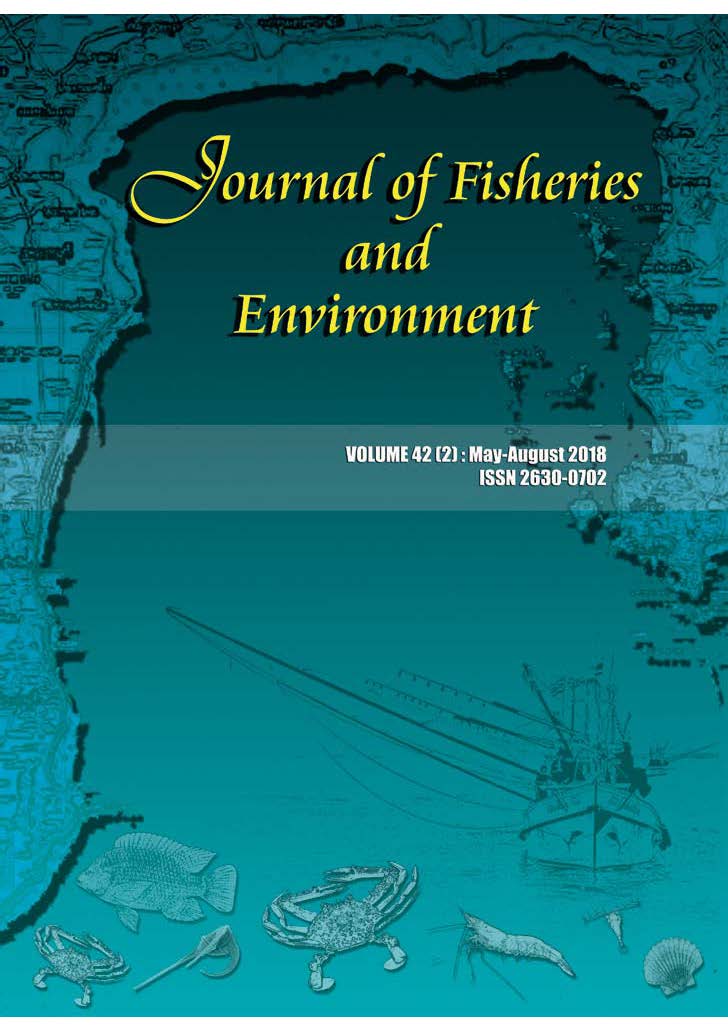The Relationship Between Land Use and Water Quality in Bangpakong Estuary, Thailand
Main Article Content
Abstract
The relationship between land use and water quality has been widely acknowledged. The land use within the watershed of the Bangpakong estuary has been continually changed by increasing industrialization and urbanization. Remarkable alteration in water quality has been recorded simultaneously with the changes of land use. Therefore, land use and basin development planning must take into account the issue of water quality alteration since water is a fundamental resource for all activities of an organism. Typically, water quality monitoring relies on field-based measurement, which is time consuming and costly. Therefore, this study aimed to develop a model for the assessment of the association of land use and water quality in Bangpakong estuary. Data regarding land use and water quality parameters were collected from May 2013 to April 2014. The correlation between land use and these parameters was investigated, and then the water quality variables that presented a significant relationship with land use were used to produce linear regression models. Our results clearly indicated that there were eleven water quality variables that were suitable for use in linear regression models. All parameters explicated conformity with regression conditions and all had a level of accuracy higher than 50 percent. The models demonstrated that the expansion of urbanization and the reduction of aquaculture and mangrove forest could result in an increase in total ammonia, nitrogen and orthophosphate, while the development of industrialized areas could result in a decrease in pH. It is obvious that land used increasingly for urbanization and industrialization can lead to the deterioration of water quality in the Bangpakong estuary.
Article Details
References
2. Bai, J.H., Q.Q. Lu, J.J. Wang, Q.Q. Zhao, H. Ouyang, W. Deng and A.N. Li. 2013. Landscape pattern evolution processes of alpine wetlands and their driving factors in the Zoige plateau of China. Journal of Mountain Science 10: 54–67.
3. Changnon, S.A. and M. Demissie. 1996. Detection of Changes in Streamflow and Floods Resulting from Climatic Fluctuations and Land Use Changes. Climatic Change 32: 411–421.
4. Lenat, D.R. and J. Kent Crawford. 1994. Effects of land use on water quality and aquatic biota of three North Carolina Piedmont streams. Hydrobiologia 294: 185–199.
5. Liu Z., Y. Li and Z. Li. 2009. Surface water quality and land use in Wisconsin, USA—A GIS approach. Journal of Integrative Environmental Sciences 6: 69–89.
6. Mander, J.B., J.N. Priestley and R. Park. 1988. Theoretical stress-strain model for confined concrete. Journal of Structural Engineering 114: 1804–1826.
7. Menasveta, P. 1996. Water resources and pollution problems. Chulalongkorn University Press. Bangkok. 290pp. (in Thai)
8. Tong, S.T.Y. and W. Chen. 2002. Modeling the relationship between land use and surface water quality. Journal of Environmental Management 66: 377–393.

